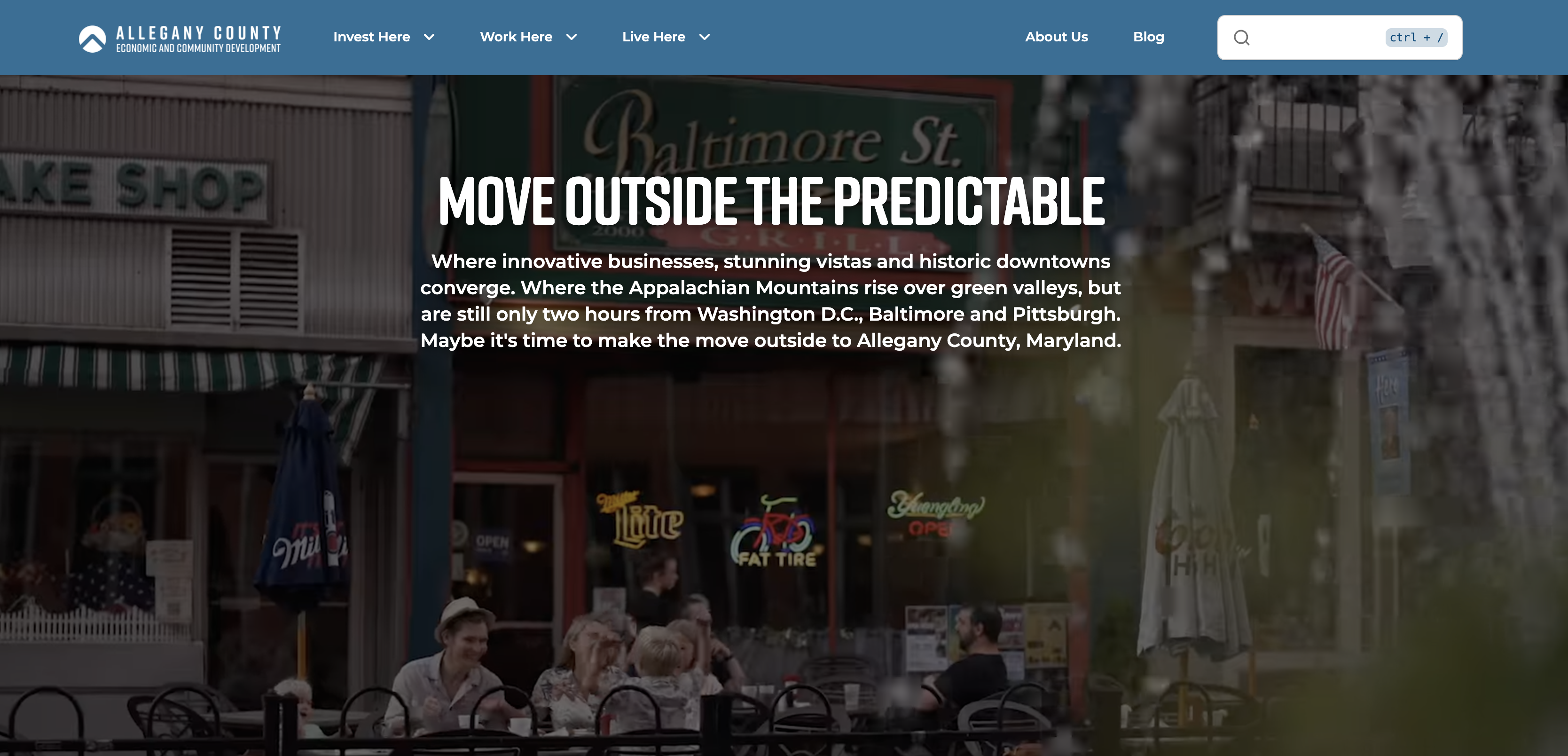You are reading Nuxt 2 docs. Head over nuxt.com for Nuxt 3 docs.
64 Robots
Rob Preston is the Co-Founder of 64 Robots. He explains how the agency leverages Nuxt to bring life to their clients projects.
Rob Preston is the Co-Founder of 64 Robots, a full service software agency based out of Baltimore, MD with an international team distributed over 5 continents.
What is 64 Robots?
64 Robots is an agency founded in 2016 by Rob Preston and Jon Robinson. The goal was to utilize our experience and passion for great ideas to help companies develop their vision into something incredible. We’re a full-service software agency specializing in leading-edge, user-forward web solutions. Our team is made up of expert-level developers, designers, and project managers from all across the globe with our stack focused on Laravel, Nuxt and Vue.
Which project did you want to talk about today?
AlleganyWorks , which is the 100% ADA compliant, responsive, dynamic website and CMS we built for the Allegany County Department of Economic and Community Development. Our intuitive WYSIWYG builder gives the AlleganyWorks team full control over their content and, with 17+ responsive layouts to choose from, they are able to create hundreds of unique pages without developer assistance.
Thanks to Nuxt, we’re able to provide AlleganyWorks server-side rendering for quick page load and an SEO boost, and the Twill CMS we leverage provides components to easily add and update all the essential metadata fields. We also utilize AWS image and video hosting in order to optimize to a variety of formats and get the video streaming quickly. This makes for an extremely fast, efficient, fully-customizable site.

Did you have to convince the client about your technical choices?
We won this project from a government RFP and although they had a different technical stack in mind we convinced them that Twill combined with a custom Nuxt application was the right way to go.
Ultimately they weren’t too concerned about the stack as long as the end product was excellent and the team was well versed in what they were building with.
With our previous expertise building Nuxt applications for the last 5+ years it was an easy sell.
How did you lead this project ?
We started by submitting an RFP which detailed the process we would follow from start to finish.
After the RFP was awarded to us, we began a discovery phase with the client where we got a feel for their needs and wants for the site. As they had a previous site, they had a good idea of what needed to be on the new platform and what they wanted to improve.
Once the discovery phase was complete, the client worked with our design team to bring to life their vision. After several iterations and approval, we began building the custom Nuxt application.
In addition to building the application, we created training materials for the client and had several calls walking them through.
Did you develop an internal component library to help you jumpstart multiple projects?
With Nuxt 3 still being in pre-release as we were building, many of the plugins we normally use were not up to date for Nuxt 3. AlleganyWorks was our third Nuxt 3 application that we started so we had already built authentication and several components that could be shared across projects which made it easy to get the base of the project up and running.
Which technologies other than Nuxt did you use during the software development?
On the backend we used Laravel as our framework and Twill, a customizable CMS solution built on top of Laravel. We host the backend application on Laravel Vapor and the Nuxt application on Vercel. We utilize AWS throughout as our cloud provider. For design we use Figma.
How did you discover Nuxt?
When Jon and I founded 64 Robots in 2016, we were playing around with a lot of ideas for side projects. For one of those I came across Nuxt to build a smaller application and immediately fell in love with it. Since then, we’ve used it as our primary front end framework for 30+ projects. With Nuxt 3, our affinity for it has only grown stronger going forward.
Why did you choose Nuxt as your main front-end framework?
In the early days, we were pulled in by the server-side rendering and some of the other built in framework functionality. Since then, the built in framework features have grown more and more robust, the community has exploded and the extensive library of plugins has made it an easy choice.
Are you using server-side rendering or static generation?
We are using server-side rendering for the vast majority of our projects but we analyze each project before kick off and decide the best approach.
We use static generation for simple CMS with a Strapi or Twill backend and regenerate the build using deploy webhooks.
For pure admin panels we tend to use a SPA where metrics or search engine indexation are not a requirement.
But now, with Nuxt 3, we are a huge fan of Hybrid rendering. It’s like playing with magic!
What is your favorite Nuxt feature?
As mentioned above: Hybrid rendering!Our boilerplate defaults to this rendering mode so developers can decide the rules to apply per route.
Static for landing pages, revalidate the cache per visit for sections like blogs or news, disabling server side rendering for admin panels, setting up custom headers or enabling cors for certain API routes… everything is possible using this and we love it!
Would you recommend Nuxt?
As a team, we’ve used Nuxt for 5+ years and recommend it to everyone. We’ve yet to find a situation where it’s not the right fit for a project and with all of the enhancements with Nuxt 3 it’s a no brainer.